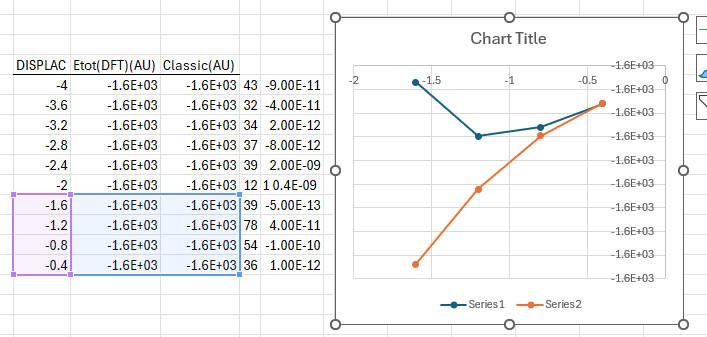Dear Jonas,
I took your provided data and plotted it. At first, it indeed seems as monotonically decreasing along one side of the quadratic function, but if you zoom in closely, you will notice this little "drop":
 .
.
I suggest you do a second scanning along the same vibrational mode, but on a finer grid (e.g., step of 0.05) in the interval -1.6 / +1.6. Then take the geometry from one of the local minima (to the left and to the right of the central point, they need to be equivalent) and optimise it. The subsequent frequencies should be positive, unless there is a second negative mode or your structure is intrinsically unstable at these conditions.
Hope this helps.
Cheers,
Aleks



 .
.